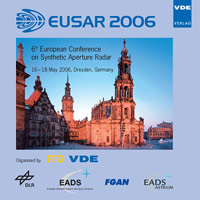Lessons Learnt from the Design and Flight-Testing of a Highly Miniaturised mmW SAR Sensor System
Konferenz: EUSAR 2006 - 6th European Conference on Synthetic Aperture Radar
16.05.2006 - 18.05.2006 in Dresden, Germany
Tagungsband: EUSAR 2006
Seiten: 4Sprache: EnglischTyp: PDF
Persönliche VDE-Mitglieder erhalten auf diesen Artikel 10% Rabatt
Autoren:
Edrich, Michael (EADS Deutschland GmbH, Germany)
Inhalt:
Small size UAVs (Unmanned Aerial Vehicles) are increasingly used for remote sensing, reconnaissance and surveillance applications. To meet the demand for miniaturised and low-weight SAR sensors for these platforms, the MISAR (Mini SAR) sensor system was designed. MISAR is based on a mmW radar frontend which was optimized for lowest size, weight and prime power demand. Realtime SAR processing and image exploitation is conducted in the MISAR ground segment. Typical UAV constraints, e.g. the necessity of online data transmission from air to ground or the unstable flight characterisics of small airborne platforms, have been considered in the overall sensor system concept. MISAR was evaluated in numerous flight test campaigns in fixed wing aircraft, rotary wing aircraft and in UAVs. With the integration of MISAR into the German UAV LUNA, MISAR was the very first SAR sensor being installed and successfully tested in an operational small-size UAV platform. This paper describes the lessons learnt from the flight tests and the resulting improvements which are currently being implemented in the second-generation design of the MISAR sensor system.


